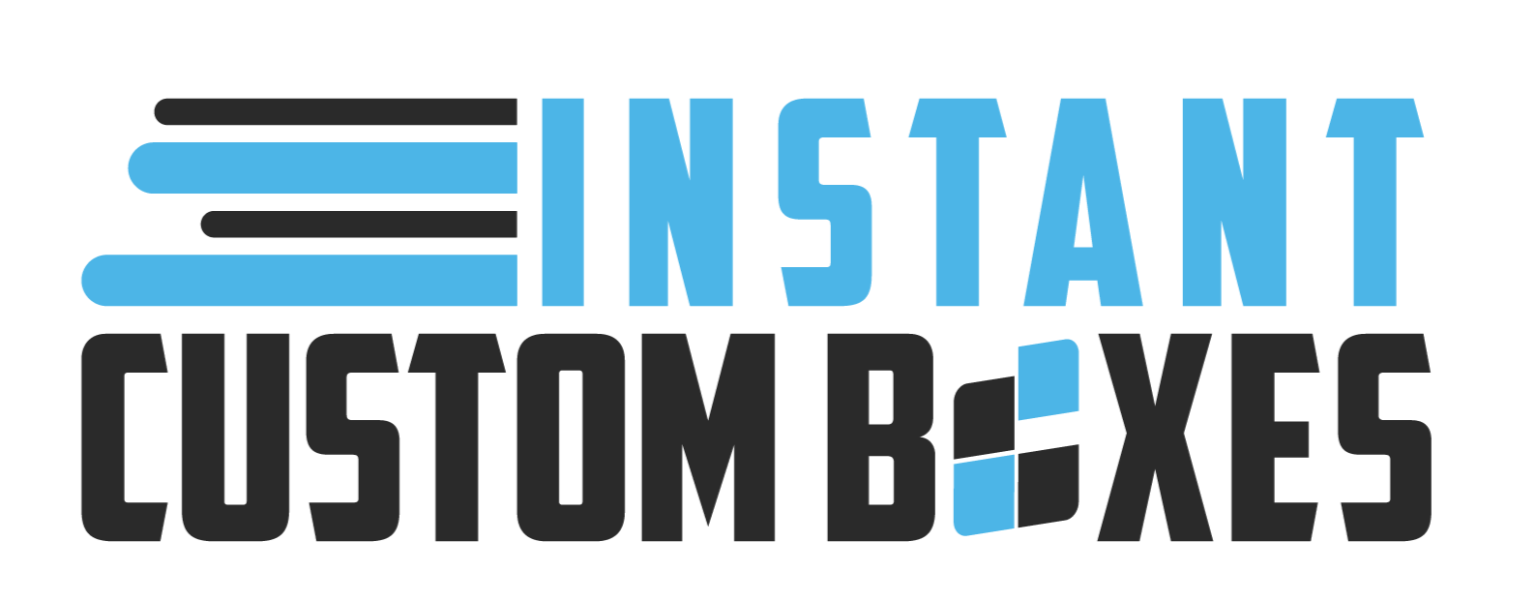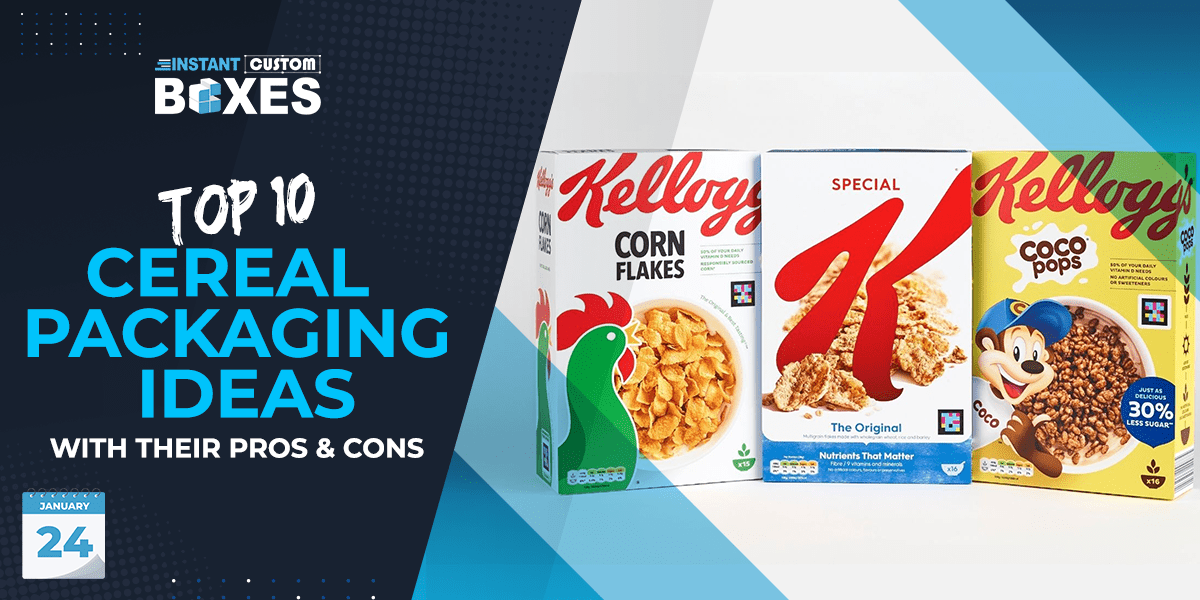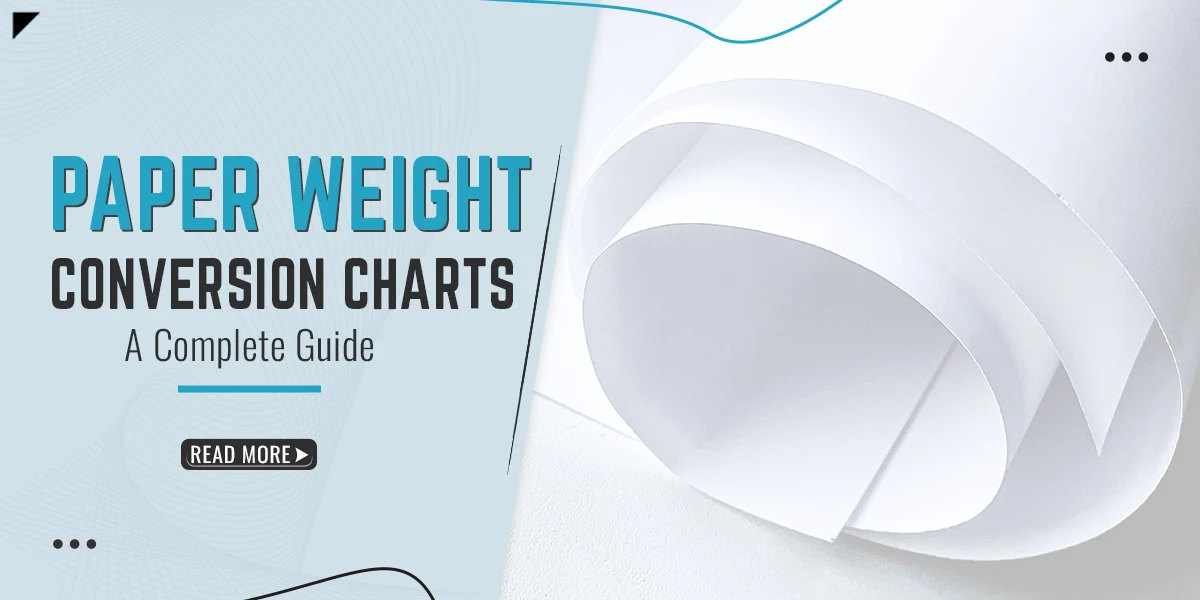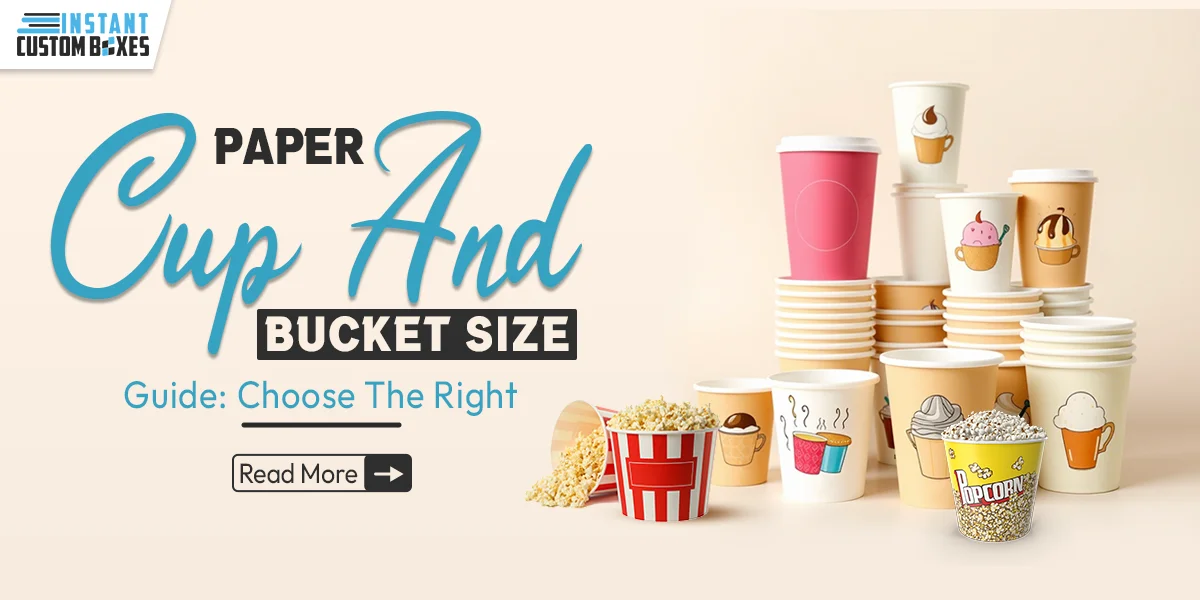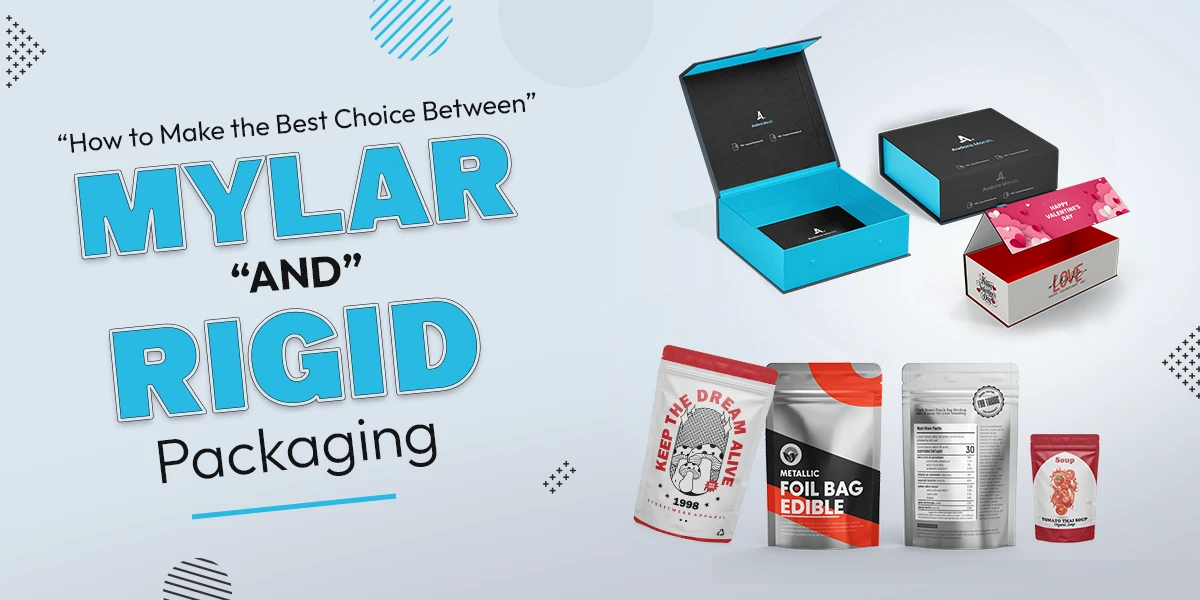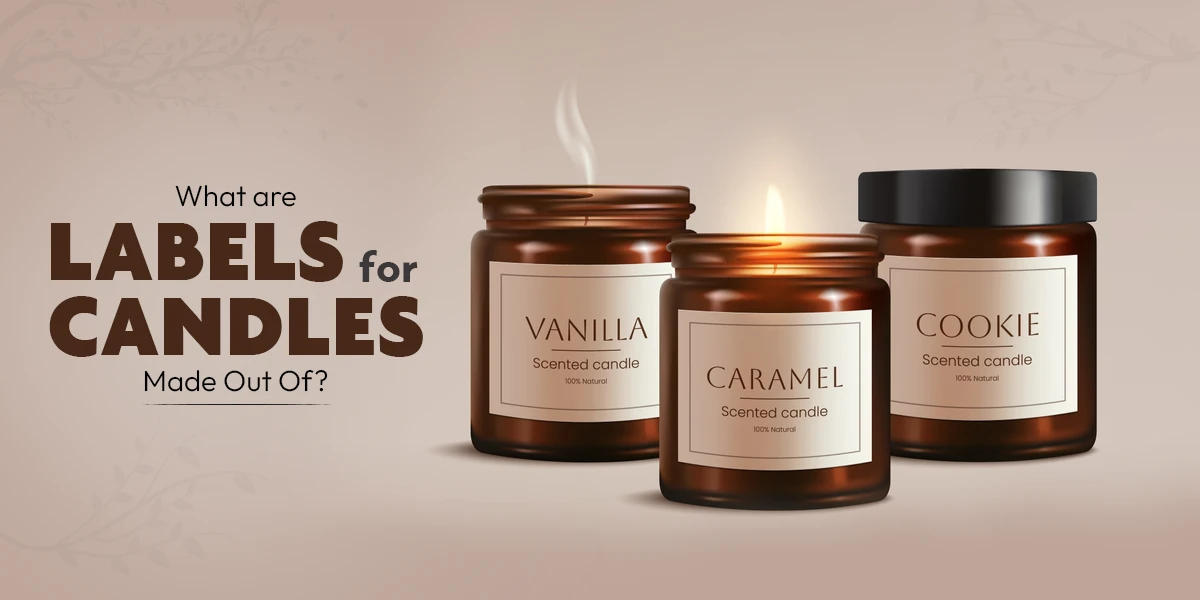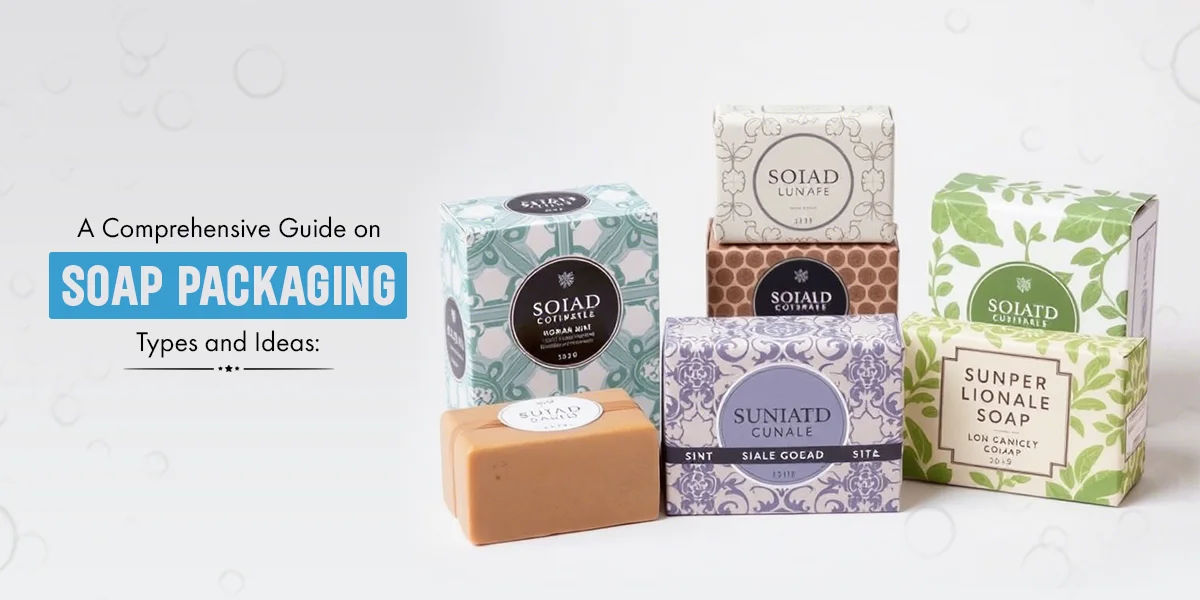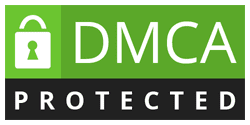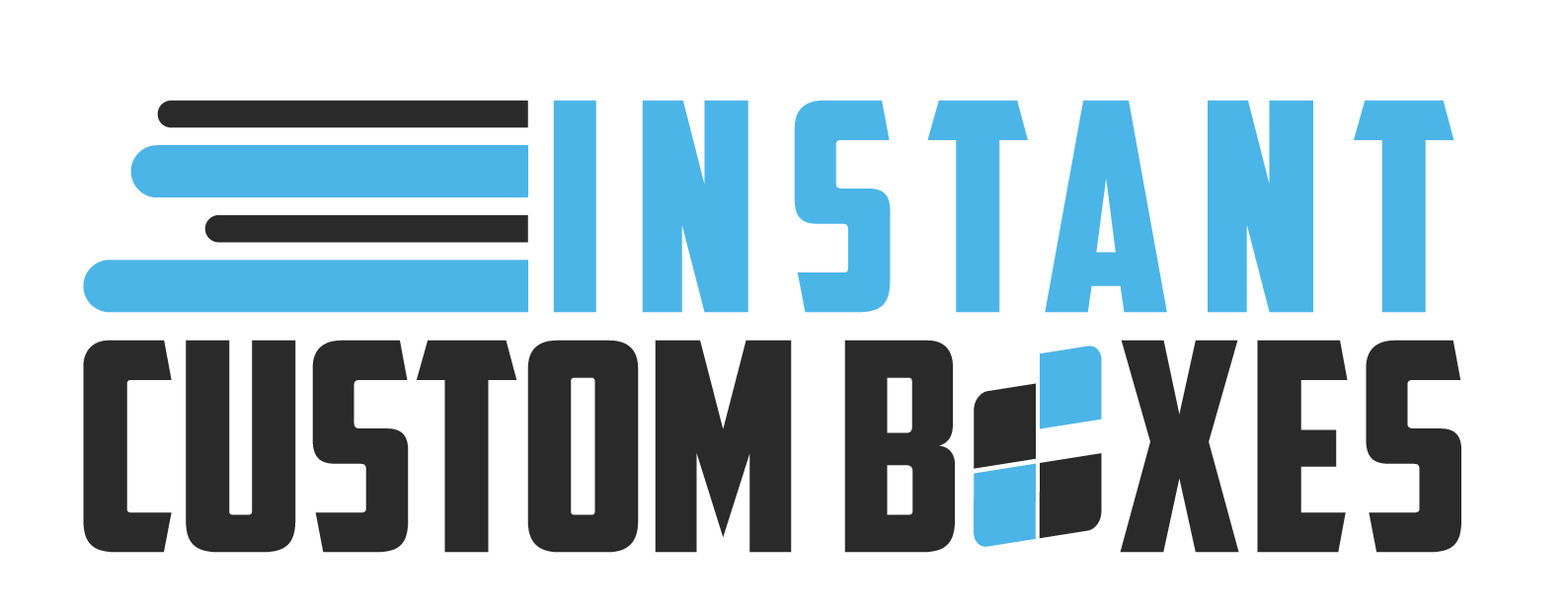When you think of Custom printed Cereal Boxes, the first thing that comes to mind is likely a bowl overflowing with milk and colorful cereal pieces. But sometimes, we forget about the packaging until we reach the grocery store aisle.
Role of Packaging in Cereal Business
Packaging is an important part of food safety. It is the final barrier that protects the end user from potential dangers involved in handling. The role of packaging in the cereal business has increased over the years due to its use as a marketing method, giving it importance.
Importance of Custom Printed Cereal Boxes
This importance can be seen by looking at cereal box designs and brand mascots. For example, some offer children samples of cereal at events. Mostly, a group of people buys the same cereal after seeing the new design including pictures and more inviting graphics.
Custom Printed Cereal Boxes are also important in marketing cereals as they offer brand identity. Children can quickly identify specific brands because of using sugar-coated cereal chunks as their primary characters.
One who uses bright color packaging with happy cartoon figures attracts children’s customers. They lure children into purchasing the product after making it easily recognizable.
Wholesale Cereal Boxes – Must Consider Necessary Factors
Wholesale Cereal Boxes draw customers into purchasing products while completing the design process. The design team, which includes product designers, engineers, graphic artists, marketing experts, and printers, creates a successful end product.
For instance, when designing cereal boxes, engineers must use many factors such as the size and weight specs of the box or even pressure points on the container for stacking purposes during transportation. On the other hand, graphic artists use bright colors and bold lettering to grab attention while adding cartoon figures and logos on wholesale cereal boxes.
The lifespan of cereal packaging is often short-lived once it arrives at grocery stores. It becomes the property of the consumer after purchase. This also adds more dangers to food safety because if consumers re-use their packaging this can breed bacteria that lead to outbreaks and cause people ill.
This can also happen with cereal packaging because consumers are unaware of the dangers that are present in the product they are consuming. So it’s necessary to take care of all aspects of the product while packaging.
Cereal Packaging Ideas with Pros & Cons
This topic focuses on the top 10 Cereal Packaging Ideas and their pros & cons, as well as which type of food product has the best cereal box.
1. Cardboard Display Box
This classic design for cereal boxes has been around since the 1950s. It is still going strong despite changes in technology and trends toward more eco-friendly designs. Unfortunately, this packaging isn’t very attractive or trendy. Some brands have tried to change this with their cereal line. The box is black with simple white lettering.
However, some brands have decorated their boxes with colorful, eye-catching designs. Some brands have even designed the box so that it can serve as a base for your breakfast table or makeshift bowl while you eat the contents of the box. There are both pros & cons to this type of packaging; however, due to its simplicity, it has become an iconic part of American culture.
Pros: eye-catching
Cons: it’s not too aesthetically appealing
2. Plastic Tray
Each plastic tray usually contains two different kinds of cereal separated by dividers inside the pack. It allows consumers to easily grab individual packs without having to open up multiple packages to get the exact cereal they want. The pros far outweigh the cons regarding this type of packaging.
Not only does it allow for easy access to individual cereal pieces. It also helps keep them fresh by keeping air out and moisture. Thus, it makes your breakfast more enjoyable due to less soggy cereal. However, some do find pouring the contents of each pack into their bowl difficult. There is usually a lid on top that must be peeled off first. Usually, these lids are decorated with fun designs).
Pros: keeps cereal pieces fresh
Cons: makes pouring difficult
3. Folding Carton
This type is essentially an open-faced cardboard box made of corrugated paper fiber. It is glued and folded to create a layered box. It is lightweight and easily recyclable, making it eco-friendly and reducing waste.
However, opening this type of cereal packaging can be difficult since there is no easy-access tab to open the flaps. So if you’re one of those people who needs to find an easy way into things, perhaps this isn’t your best cereal option (or you could just use scissors).
These days, many cereal brands tend to lean towards this type. Not only does it protect without wasting materials, but it also helps entice consumers with its unique/fun design.
Pros: recyclable; unique/fun design
Cons: waste of material
4. Plastic Bag with Paperboard
If you’re one of those people who doesn’t have a lot of space at home, then this type might be the cereal box for you. It features a plastic bag that is typically heat-sealed with a paperboard backing. So spilling and leakage can be kept to a minimum while being transported from the store to your house. The negative aspect of this type is that it’s harder to transport since there’s no handle on top. However, some manufacturers have tried their best to fix this issue by creating foldable bags.
Pros: protects better than cardboard
Cons: harder to transport
5. Ecofriendly Box
This design has been around since the late 1800s and it’s still going strong. For those who want to go green but don’t mind shelling out a little bit more money then this type of cereal box might be for you. It includes 100% recycled paperboard.
However, the negative aspect is that it takes up more material and, therefore, isn’t as naturally eco-friendly as some other types (e.g., bags). Plus, many cereal manufacturers have recently begun using less eco-friendly materials in their boxes due to cost issues which have become an ongoing debate amongst consumers.
Pros: most cost-efficient
Cons: not environmentally friendly
6. Ribbon Handle Box
This packaging is very similar to your standard cardboard boxes, except this time, it includes a ribbon handle on the front for easy carrying. Cereal companies realized that people were looking for a fun way to carry their cereal around with them, so they added the ribbon handle design to make things more convenient.
However, this is slightly less efficient than using a plastic bag because not only are there two pieces of material instead of one (the front flap and the box itself), but also because it uses more material overall since there is an extra layer on top of the entire package.
Pros: easy opening access
Cons: waste of material
7. Canister
This type usually contains 15-30 individual servings and comes in different shapes such as cylinder, cube, sphere, or tubular carton. However, its main characteristic is that it features a paperboard slipcover, which is usually decorated with pictures of different flavors. This packaging might be a good option for those who have the time to sit down and eat cereal rather than take it on the go. It offers better protection than a cardboard box due to its hardened shell. However, if you’re looking for something convenient then perhaps this isn’t your best bet since it requires users to pour out each portion into their bowl – plus there’s no easy access opening tab either.
Pros: protects better than cardboard
Cons: harder to pour
8. Bag In Box
This type is a plastic bag from the grocery store inserted into a corrugated box. These bags can hold up to 300 pounds and usually contain up to 20 servings. If you eat cereal by yourself, this packaging might be a good choice. However, the problem with this one is that it uses much more material than other types (e.g., bags). It’s not as cost-efficient either because there’s no easy-access opening tab like boxes/bags have.
Pros: recyclable
Cons: waste of material
9. Container
This type has become increasingly popular in recent years due to its resemblance to milk cartons. They’re both made from paperboard and plastic. However, one big difference is that jugs can hold up to 96 ounces of fluid compared to only 32 ounces for milk containers.
If you’re looking for something similar to a jug, this may be the right choice. If you’re more concerned about recycling, then it may not be the right one! Since it still uses materials that aren’t readily recyclable.
Pros: recyclable
Cons: waste of material
10. Paperboard Bag
The main advantage of this type of packaging is that it’s made from 100% biodegradable and compostable materials. It helps reduce landfill waste and saves energy during production, making it one of the greenest cereal boxes around. However, one big drawback is that the paperboard material isn’t very sturdy. It requires extra packaging, such as plastic sleeves and sometimes even cardboard, to support the contents inside, which decreases its overall efficiency.
The pull-tab opening is the number one reason why consumers buy cereal, so making this feature more convenient for users is of major importance to manufacturers.
Pros: environmentally friendly
Cons: doesn’t protect as well
We all eat cereal. It’s not just now and then. It’s a staple food that has earned its right to be called one of the world’s most preferred breakfast meals. There are so many Cereal Packaging Ideas that it can become hard to choose which one you want. This is where Instant Custom Boxes come into play! With the help of our skilled team, cereal manufacturers have created some ingenious packages for their products. Afterward, they successfully stand out on the shelf amongst all their other competitors.
